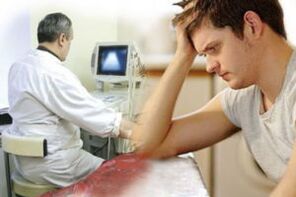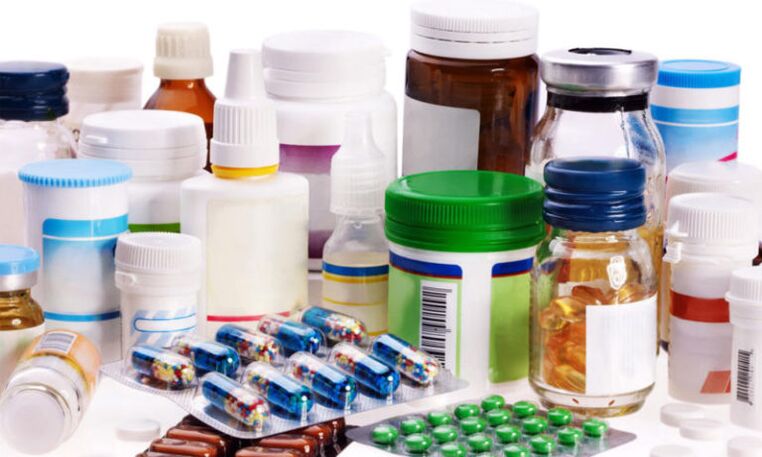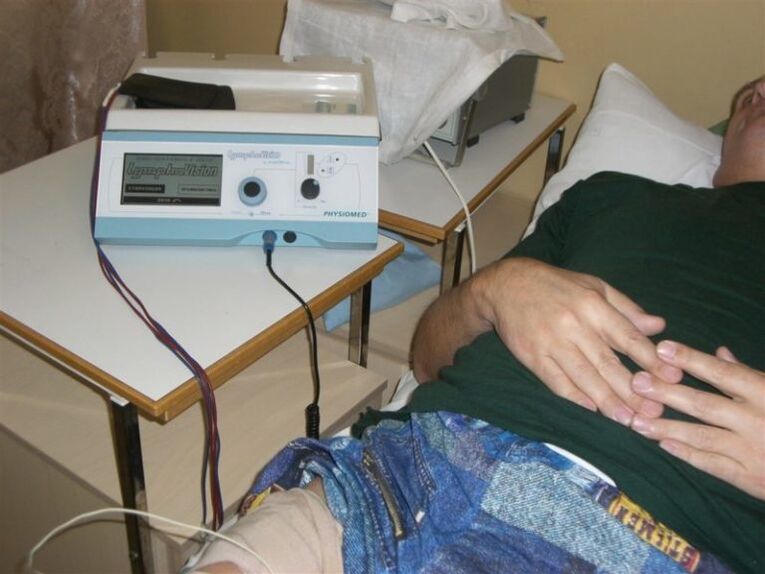
It is not enough to think about how to cure prostatitis in a man, yet you need to approach this question competently. The combination of traditional and traditional therapy will be effective. You should initially undergo a full examination and only then seek an approach to competent treatment. Below you can learn how to heal your prostate.
Symptoms of Prostatitis
To begin treatment in time, you need to know how the disease manifests itself in the initial stages. First symptoms of prostatitis:
- pain in the perineal region;
- difficulty urinating;
- decreased libido.
If the disease is in a chronic stage, these symptoms are less pronounced and intermittent. The chronic form of prostatitis is characterized by periods of exacerbation.
How to treat chronic prostatitis with medication
Many people are interested in getting rid of chronic prostatitis. It must be said immediately that it is, but on one condition: it cannot be self-healed. First, the doctor needs to find the right medications.
There can, of course, be different forms of prostatitis, and the choice of medication depends on this.
If the disease is bacterial, antibiotics do not help here. An exception is test treatment in which an antibacterial agent is chosen to confirm or rule out the infectious nature of prostatitis. Of course, the body is initially examined before therapeutic measures can be taken.
Antibacterial drug therapy
Antibiotics are the first choice in prostatitis. They can have the following effect on the inflamed area:
- Antibiotics localize the infectious process in a short time.
- By eliminating the main cause of the disease, the inflammation of the prostate disappears quickly.
- Antibiotics are prescribed if indicated.

In addition to antibiotic therapy, additional treatment will be required:
- prostate massage;
- medical gymnastics;
- physiotherapy;
- immunostimulatory drugs;
- painkillers.
The process of treating chronic prostatitis is long and takes place only under the supervision of a doctor. If the patient has parenchymal or follicular-type prostatitis, he should take high doses of drugs, only then a therapeutic effect can be achieved.
Antibacterial drugs are divided into broad-spectrum drugs and drugs with fluoroquinolones.
How are antibiotics used? If the analyzes showed certain types of bacteria, the required antibiotic is selected according to these indicators. So, depending on the type of microorganism, some drugs may be suitable:
- Many macrolides, tetracyclines and fluoroquinolone antibiotics will be effective in detecting ureaplasma, mycoplasma and chlamydia.
- Gonococci are eliminated by almost all types of antimicrobial drugs except the tetracycline series.
- The same can be said for Escherichia coli, in which only macrolides will not be effective.
What medications are most commonly prescribed? Fluoroquinolones. These are the strongest antibiotics and are most commonly prescribed for prostate tuberculosis. They also have side effects. The first is the neurotoxicity of the drug, which affects the brain, and the second is phototoxicity, which reduces the cells' exposure to ultraviolet radiation.
The fluoroquinolone group contains the following drugs:- ciprofloxacin;
- levofloxacin;
- ofloxacin.
Because these drugs have side effects, they are not prescribed for the following diseases and conditions:
- diabetes mellitus;
- intolerance to one or more components;
- medicine;
- epilepsy;
- Under 18 years of age.
Tetracycline antibiotics have recently been rarely prescribed if the prostate gland is inflamed. This is due to the negative effect on the human body.
Macrolides are the latest generation of antibiotics. They have a broad spectrum of action and are not as toxic as other antimicrobials. But in prostatitis, they are not prescribed as often. Azithromycin is commonly used.
How to treat, what type of antibacterial medications only your doctor will respond to. The drug is selected based on laboratory tests.
Effect of non-steroidal anti-inflammatory drugs
These drugs are used for congestive chronic prostatitis. They work as follows:
- improves blood microcirculation in pelvic organs;
- normalizes the outflow of secretion;
- reduces inflammation;
- has a beneficial effect on the urination process;
- helps increase efficiency and improve the overall condition of men.
Non-steroidal anti-inflammatory drugs should only be used as directed by your doctor.
Physiotherapy
The course of physiotherapy is chosen individually in combination with medication. Hardware physiotherapy may include the following procedures:
- Galvanized. Prostatitis is treated with direct current.
- Electrophoresis as a variant of electroplating using drugs.
- Ultrasound. They use a rectal emitter.
- Magnetotherapy. It is prescribed to many because it has no contraindications.
Physiotherapy methods are compatible with all drugs. These methods usually do not carry side effects, except in cases of individual intolerance.

How to treat prostatitis with massage? This method also belongs to physiotherapy. The task of massage is to remove stagnant secretions from the body. In addition, stimulation of the prostate improves blood circulation in this area.
All operations are performed through the anus. The massage is performed through the wall of the rectum. In this case, the doctor monitors the secretion of secretions. If the fluid does not appear, it indicates complications of the disease.
An average of 10 massages will be needed to achieve a therapeutic effect. You can massage yourself, but you have to learn this first, as spontaneous actions can only damage and damage the rectum.
Physical activity is also important during illness. Therefore, your doctor will develop a number of practices to help you get rid of prostatitis in a complex. The activity of healing gymnastics is aimed at improving the blood supply to the organ and normalizing metabolic processes.
Analgesic therapy
Treatment of prostatitis is not limited to antibiotics, drugs and activities that improve microcirculation and NSAIDs. It is very important to cope with the pain during the illness. In this case, your doctor will prescribe oral painkillers. In addition, men struggle with depressive states.
Their goal is to temporarily reduce pain and improve gland tone. The tablets are prescribed by the urologist based on the symptoms that appear and the individual parameters of the patient. The allergic background and the presence of concomitant diseases in the patient are taken into account.
Traditional treatment methods
Traditional methods will be effective in developing the disease. Therefore, try to start treating the disease at the first signs of the disease.
The benefits and advantages of home treatments include:

- Only natural ingredients are used that cannot harm the body.
- Drugs are not addictive, like some pharmacological agents.
- You can make a cure from the available products in a short time, and it doesn't cost that much.
When we talk about phytotherapy, we use herbs, fruits, berries, roots here. They are most often used to relieve inflammation of the prostate gland. The most popular recipes include:
- Pumpkin seed application.They contain zinc, which is necessary for the normal functioning of the male body. 500 g of seeds (unroasted only) must be ground in a powdered state. Then mix the pumpkin seeds with 200 g of honey and form small balls the size of hazelnuts. Consume such a ball, chewing well, twice a day before meals. Store the rest in the refrigerator. You can simply consume 30 pumpkin seeds a day before meals, this treatment will also improve.
- Hazel.Either bark or plant leaves can be used. It is worth noting that cooking the crust takes twice as long. Boil 50 g of leaves in 400 g of boiling water and leave to stand for half an hour. Keep the infusion for 1 hour while cooking the crust. Take the resulting product 4 times a day, 150 ml.
To get rid of prostatitis once and for all, you have to follow many rules for a long time. First, there is a need for drug therapy, which should be combined with a diet and an active lifestyle. Second, they use physiotherapy, which includes hardware techniques, prostate massage, and physiotherapy exercises. Symptomatic treatment, therapy for concomitant illnesses, and psychotherapy play an important role. All these actions must ultimately lead to positive results.































